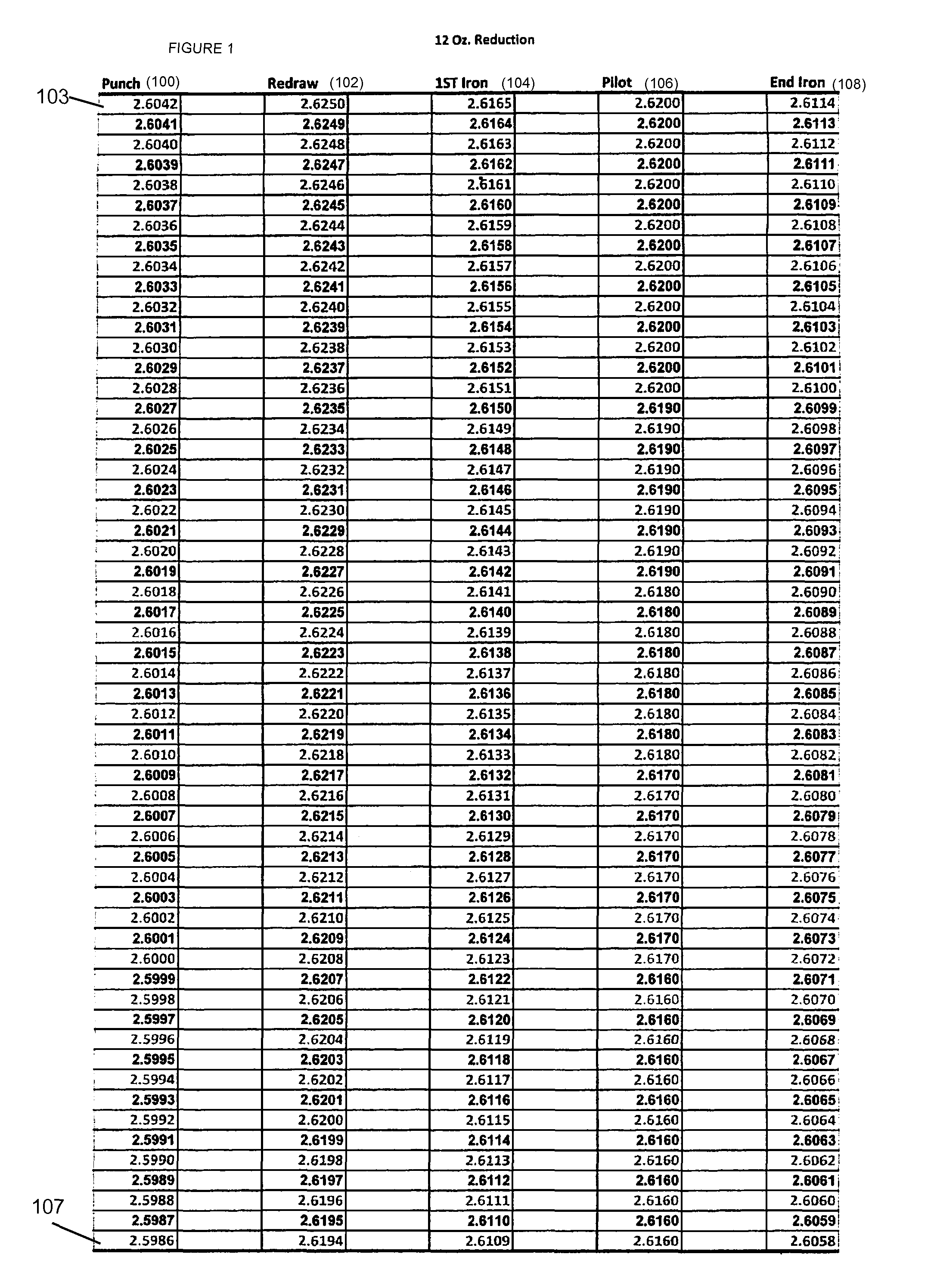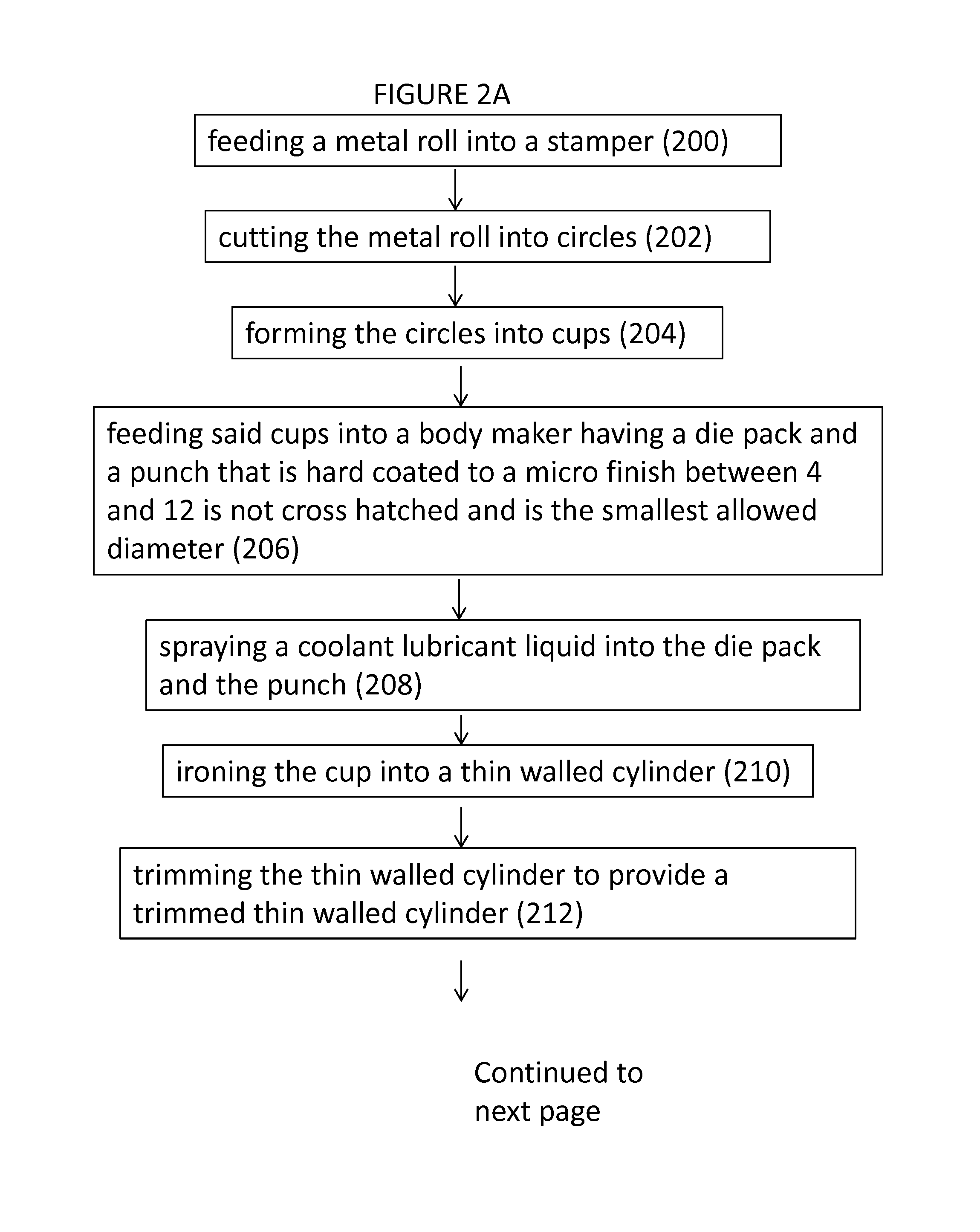Methods and processes of manufacturing two piece cans
a two-piece, canning technology, applied in the direction of transportation and packaging, rigid containers, other domestic articles, etc., can solve the problems of metal waste, difficult for the canning to be released from the punch, and the self-must be strong enough to withstand
- Summary
- Abstract
- Description
- Claims
- Application Information
AI Technical Summary
Benefits of technology
Problems solved by technology
Method used
Image
Examples
Embodiment Construction
[0019]The following detailed description is of the best currently contemplated modes of carrying out the invention. The description is not to be taken in a limiting sense, but is made merely for the purpose of illustrating the general principles of the invention, since the scope of the invention is best defined by the appended claims.
[0020]With reference to FIGS. 2-6, the present invention provides many innovations to reduce the cost of the can, reduce the amount of aluminum in a can, and eliminate hazardous chemicals into our already overburdened ecosystem of our fresh water and reducing the carbon foot print in making the most recycled container (the aluminum can). The present invention solves problems in the body maker through novel ways to help eliminate many undesirable practices and simplify them with a coating on the parts and standardization of the punches and external dies at the minimum size diameter. The following provides a breakdown of the methods and processes accordin...
PUM
| Property | Measurement | Unit |
|---|---|---|
| angle | aaaaa | aaaaa |
| angle | aaaaa | aaaaa |
| angle | aaaaa | aaaaa |
Abstract
Description
Claims
Application Information
 Login to View More
Login to View More - R&D
- Intellectual Property
- Life Sciences
- Materials
- Tech Scout
- Unparalleled Data Quality
- Higher Quality Content
- 60% Fewer Hallucinations
Browse by: Latest US Patents, China's latest patents, Technical Efficacy Thesaurus, Application Domain, Technology Topic, Popular Technical Reports.
© 2025 PatSnap. All rights reserved.Legal|Privacy policy|Modern Slavery Act Transparency Statement|Sitemap|About US| Contact US: help@patsnap.com



